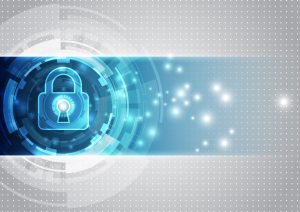Data Backups – Your last line of defense against Cyber Criminals

Ransomware
Ransomware is a form of Malware that, once activated, can deny access to files on smartphones, personal computers, and servers. In some forms, a Ransomware attack will go beyond denial of service; and the Cyber Criminals will threaten to publish your data. As the name suggests, Ransomware offers to unlock your files if you pay a ransom. While modern day Ransomware attacks can be traced back to 2005, the history of Ransomware goes back as far as 1989. The pace of these attacks doesn’t appear to be slowing down. In 2016, many sources had payouts approaching $1 billion by the end of the year.
 As you might imagine, having been around for such a long time, Cyber Criminals have developed several ways to launch Ransomware attacks. Within the data center, our first goal is to keep these attacks out of our systems and away from our production data. IT Professionals protect their production environments by using firewalls, anti-virus software, proper authentication practices, and end-user education, among other measures.
As you might imagine, having been around for such a long time, Cyber Criminals have developed several ways to launch Ransomware attacks. Within the data center, our first goal is to keep these attacks out of our systems and away from our production data. IT Professionals protect their production environments by using firewalls, anti-virus software, proper authentication practices, and end-user education, among other measures.
Despite these efforts, there is always the possibility that an attack is successful and systems are compromised. In the event our corporate files do become impacted by a Ransomware event, we must be able to rely on our data backups to restore systems and not be forced to pay a ransom. However, this begs an important question:
How can we be sure that our backups are protected?
This is a question that is being asked more frequently by our clients.
First, we need to acknowledge that backups are not free from the risk of being attacked by Ransomware. However, there are steps that can be taken to reduce the risk of exposure, even if the Malware has found its way into the Production infrastructure. These steps fall generally into three categories: Security, Replication, and Isolation.
Security
- Provide a dedicated host for the backup application.
- Disable network interfaces not in use on the hosts involved in performing backups.
- Restrict the number of user accounts with access to the backup application and the host onto which it is installed.
- Disable access to communications ports and protocols not needed for the backup operation (i.e., HTTP, FTP, Telnet, etc.).
- Disable accounts not used for operation of the backup process.
- Disable services not used for operation of the backup process.
- Utilize best practices for user credentials (password complexity, aging, etc.).
- Keep Security Patches up to date on the host and the backup application itself.
Replication
 Maintain at least three (3) copies of the backup files on at least two (2) different types of media and keep at least one (1) of those copies offsite. (3-2-1 Rule)
Maintain at least three (3) copies of the backup files on at least two (2) different types of media and keep at least one (1) of those copies offsite. (3-2-1 Rule)- Consider keeping a copy of your backup on tape or on spinning disk that is not connected to the network unless backups are running. The point here is to maintain an offline copy.
- If replicating between backup appliances, consider building a delay into replication to keep from immediately replicating files infected with the Ransomware. This tactic may allow you time to discover the proliferation of an attack and keep it from spreading to your replication target.
- Utilize hardware based snapshots on Production storage arrays and backup appliances (these are not usually presented to a file system and are therefore not subject to attack).
- Maintain multiple restore points using snapshots and the backup software.
Isolation
- Maintain separate hosts for the backup infrastructure.
- Utilize offline backup media (tape or disconnected disk targets).
- Utilize hardware based snapshots.
- Utilize Cloud connected backup targets.
The steps listed above are intended to provide guidelines for protecting your backup data from Ransomware. Execution of these steps is dependent on your own infrastructure, the type of backup targets you employ, the backup software you use, etc.
There are many resources available that delve into this topic in greater detail. The intent of this post is simply to make sure you are including backups in your strategy to protect the enterprise against Ransomware attacks. And, of course, Zunesis is ready to help you design a strategy that fits your needs and is right for your environment.
Categories
Search
Blog Categories
Related Resources
Archives
- March 2024
- January 2024
- October 2023
- September 2023
- August 2023
- July 2023
- June 2023
- May 2023
- April 2023
- March 2023
- February 2023
- January 2023
- October 2022
- July 2022
- June 2022
- May 2022
- April 2022
- March 2022
- February 2022
- January 2022
- December 2021
- November 2021
- October 2021
- September 2021
- August 2021
- July 2021
- June 2021
- May 2021
- April 2021
- March 2021
- February 2021
- January 2021
- December 2020
- November 2020
- October 2020
- September 2020
- August 2020
- July 2020
- June 2020
- May 2020
- April 2020
- March 2020
- February 2020
- January 2020
- December 2019
- November 2019
- October 2019
- September 2019
- August 2019
- July 2019
- June 2019
- May 2019
- April 2019
- March 2019
- February 2019
- January 2019
- December 2018
- November 2018
- October 2018
- September 2018
- August 2018
- July 2018
- June 2018
- May 2018
- April 2018
- March 2018
- February 2018
- January 2018
- December 2017
- November 2017
- October 2017
- September 2017
- August 2017
- July 2017
- June 2017
- May 2017
- April 2017
- March 2017
- February 2017
- January 2017
- December 2016
- November 2016
- October 2016
- September 2016
- August 2016
- July 2016
- June 2016
- May 2016
- March 2016
- February 2016
- January 2016
- December 2015
- October 2015
- September 2015
- August 2015
- July 2015
- June 2015
- May 2015
- April 2015
- March 2015
- February 2015
- January 2014
- February 2013




